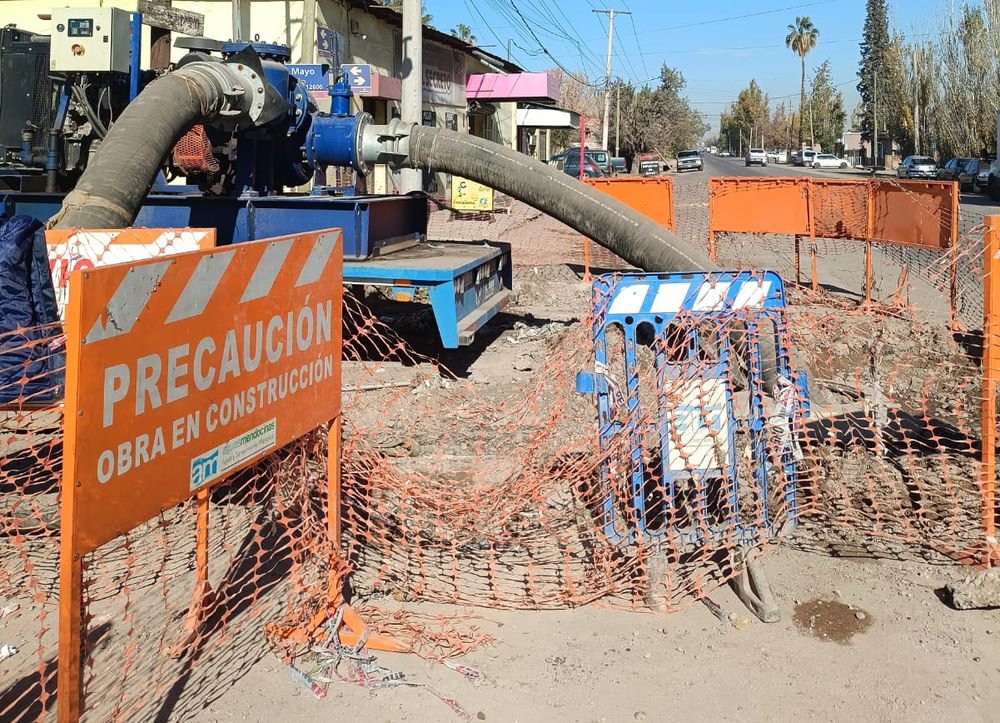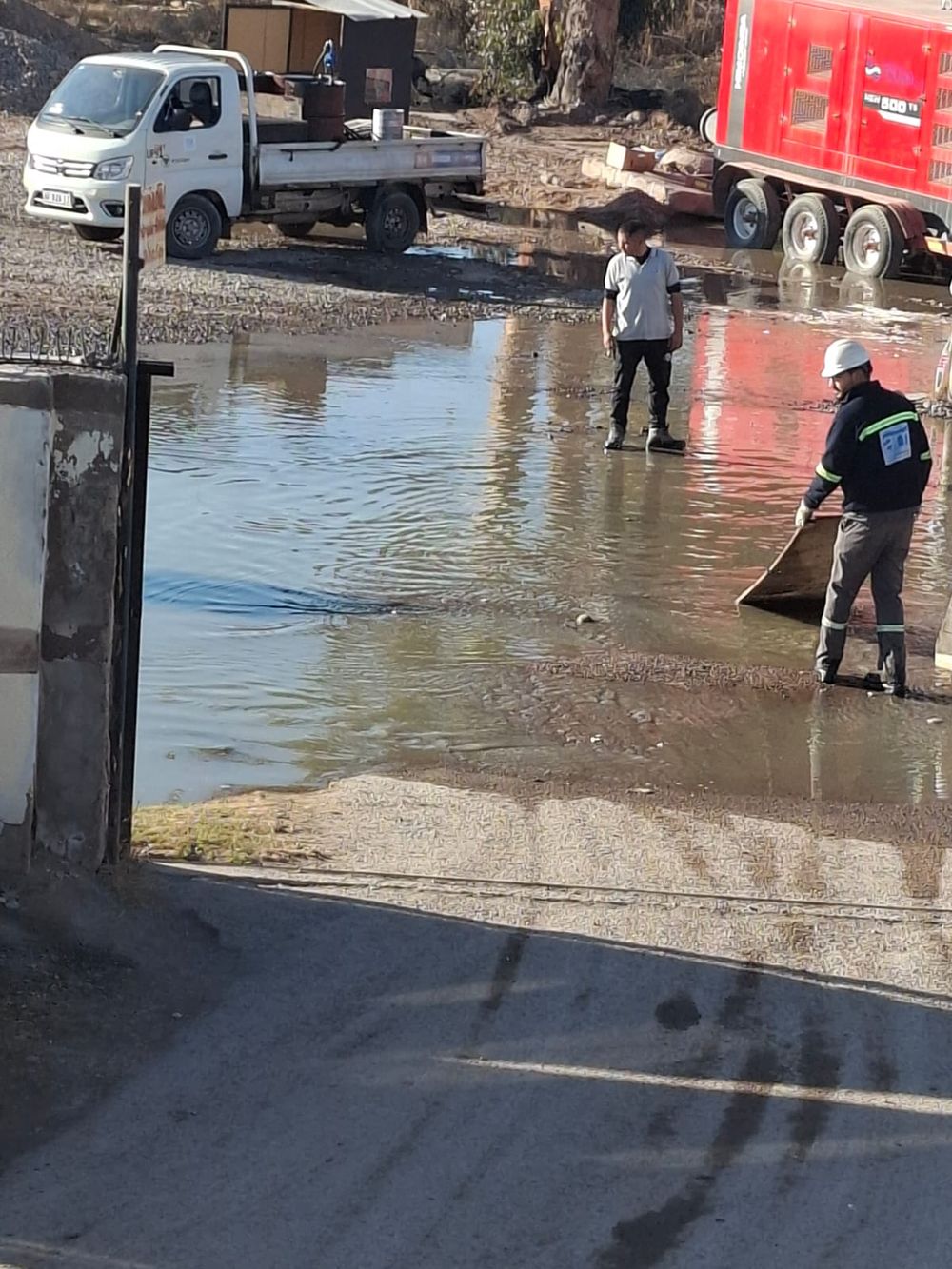Pollution: Residents of Corralitos continue to be flooded with sewage from 500,000 people in Greater Mendoza.

For 7 months they have been facing a true daily odyssey. What reaches the site is the sewage water of 500,000 residents of Greater Mendoza . " It's a disaster, all this is sewage water ," says Marcela, one of the residents, as she points out the state of the flooded street, ditches, and sidewalks.
Sewage spill in Corralitos

The Andes
“This is getting worse. It should have gotten better. I know they're working, the people of Aysam are working alongside contracted companies , and Mingorance is very willing, but there's no change and no solution,” said Marcela, one of the area's residents. The entire front of her house is flooded, like a swimming pool. She said people have nowhere to walk, and, as has already happened, water is even entering the grounds of homes.
In January, the news was about the sewer collector collapse, but it was a critical moment that had already been going on for a while . According to local people, the leaks began intermittently two years ago, the situation worsened in late 2024, and by 2025 had become unsustainable: nauseating odors, sewage crossing streets, and flooded yards are part of everyday life.
Despite repeated complaints, the lack of response led residents to turn to the media. The lowest-lying lots bear the brunt, and even when the water recedes, some don't dry out, leaving them surrounded by mud.
Embed
⭕️| Guaymallén under sewage
A serious health and environmental crisis has been hitting the residents of Corralitos, in Guaymallén, for seven months, where the collapse of a sewage collector has flooded streets and fronts of houses with sewage coming from more than… pic.twitter.com/ZM630akiXo
— LOS ANDES (@LosAndesDiario) July 26, 2025
The irrigation ditches are clogged with stagnant water, and the foul odor persists. Aysam ( Mendoza Water and Sanitation) has intervened to resolve the issue, but as can be seen, the solution is lacking, and the strategy has caused additional problems for residents.
Large pumps were placed every few meters, interfering with traffic as they take up a large portion of the street. They also create noise pollution with a constant noise from their operation. This, while major construction work is progressing.
Now, with another flood, Marcela commented that the authorities told them that one of the pumps had broken . But she added another point: "Since they're prohibited from dumping water into the Pescara Canal, we're flooding." For a time, Aysam was allowed to dump water pumped from the area there. But as of July 1, it was announced that this would no longer be done, with some exceptions (see below).
How residents live between pollution and waterNeighborhood testimonies describe changes in habits, suspended property sales, and health problems, especially for children . Given the circumstances, they can no longer freely go outside to play and spend more time indoors. They also report that one of the strategies they have to do is leave their shoes outside their homes after coming in from the street, since they are obviously covered in residue and pollutants .
In the summer, outdoor activities were also reduced due to the proliferation of mosquitoes.
Marcela has been one of the neighbors' point of contact with the authorities and believed in a solution, but she seems to have lost faith. "This can't be fixed. I don't know how else they'll be able to resolve it, because we can't continue the way we're living, we can't," she stated, exhausted.
Sewage spill in Corralitos

"We can't leave the house on foot; you have to leave by car . People who come on foot come along the sidewalk, which is higher, and they have to walk past a business because they can't leave via the street," he described.
And he gave more details about the ordeal the residents face. "You can't travel from the corralón to Severo del Castillo; people have to go through the corralón to take the bus, and on top of that, the bus no longer runs here , on Dos de Mayo," he added.
Old pipes for exceeding demandAysam Director Humberto Mingorance explained that the collapsed collector receives effluent from Luján, Maipú, Ciudad, Guaymallén, and Godoy Cruz, representing the sewage waste of 500,000 people. The pipeline, installed 40 years ago in what was then an agricultural area, was not adapted to population growth or urbanization . He also explained that along the pipeline's long history, many residents connected storm drains to the sewage system, which exacerbates the overflow during the rainy season.
Due to the facility's "age," the pipes are deteriorating. Furthermore, there are no inspection chambers for checking and unclogging, and the area is in a gentle slope. This caused solids and sediment to accumulate, blocking the path and leading to the collapse.
Sewage spill in Corralitos.

The director told Los Andes that 30 cubic meters of debris were removed in the first 600 meters alone . To carry out the work, Aysam hired a Brazilian company and plans to install 28 new cameras along a 3,000-meter stretch.
More pollution: sewage in an irrigation canalThe problem didn't end there. The company had been authorized to dump the extracted sewage into the Pescara Canal under specific conditions and for a limited period of time . However, this measure raised concerns among farmers and residents of Los Corralitos and Colonia Segovia, who use the water for irrigation.
Aysam then asked for an extension to allow him to dump the water there.
In a June 4 interview with Los Andes, Mingorance explained that they expected to stop pumping waste into the Pescara Canal within 15 to 20 days . He explained that the construction of the chamber inlets would take three to four months, and that they hope to put out to tender this year the Colonia Segovia collector, which will be the second part of the strategy and will cost approximately $30 million. Once completed, the waste will be dumped into the El Paramillo sewage treatment plant.
On July 1, Sergio Marinelli, head of the General Department of Irrigation, confirmed that the discharge of sewage effluent into the Pescara Canal by Aysam had ended . In a statement to Los Andes, the company Aguas Mendocinas clarified: "The permanent discharges into the Pescara Canal have ended. However, peak flows in the collector may occur, eventually requiring a discharge. In that case, the channel inspector must be informed."
The Guaymallén Municipality was considering declaring an environmental emergency in the so-called green belt, which covers some 500 affected hectares.
losandes




